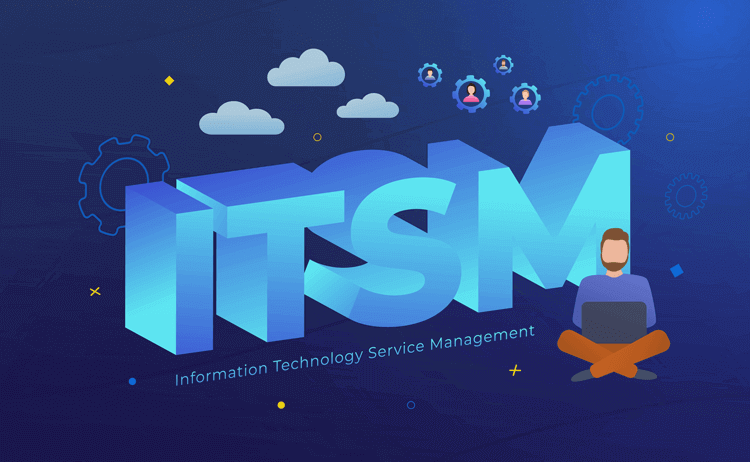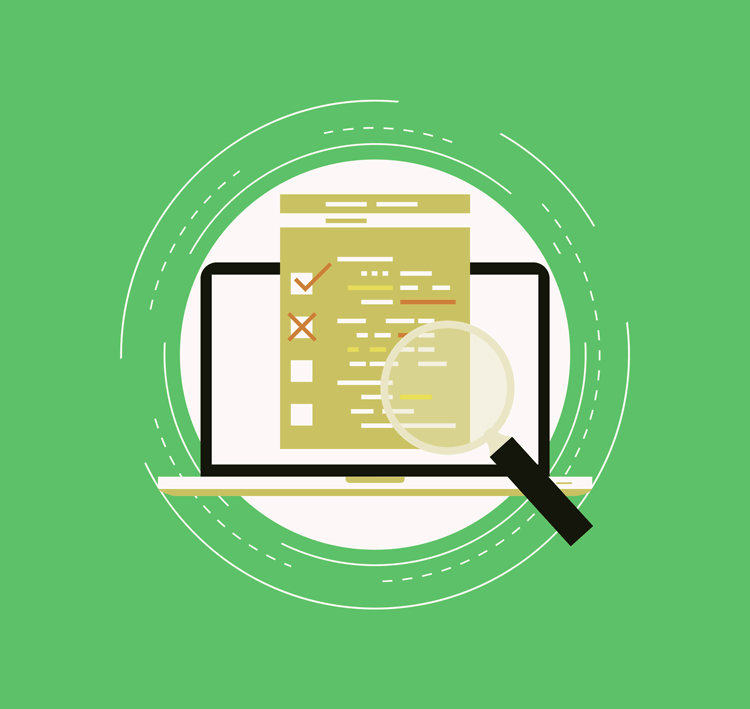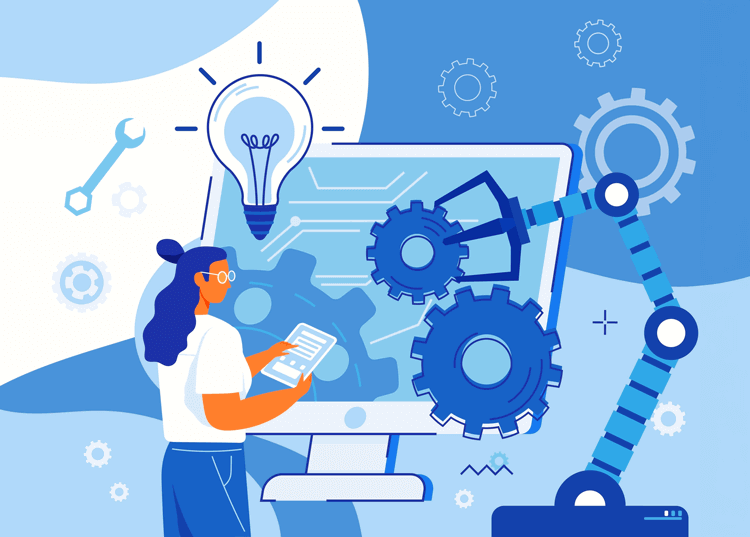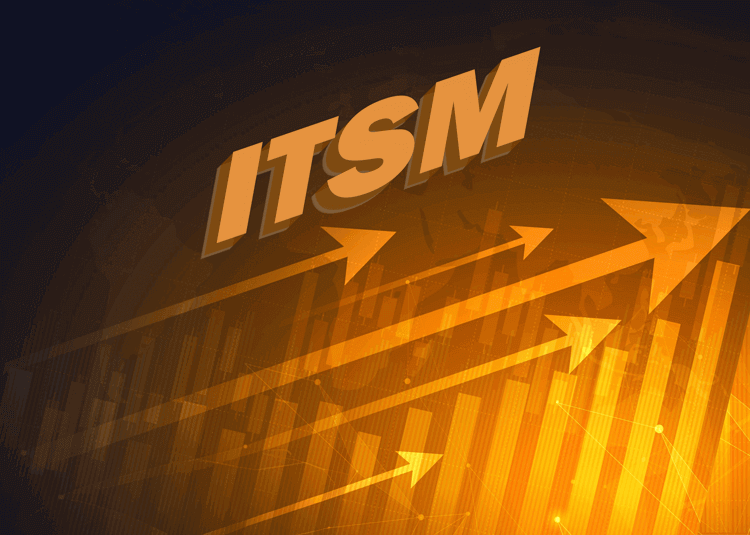Top 15 Benefits of ITSM Plus How-To Tips
IT Service Management (ITSM) is the umbrella term for the IT team, department, or vendor that keeps every organization's IT, software, hardware, and cloud services running smoothly.

ITSM is more than simply an IT help desk, or service desk. ITSM covers the following mission-critical areas of an organization's technology-based operations:
- Strategic oversight
- Operational efficiency
- Securing the relevant IT and technology budgets
- Working with key decision makers and leadership teams
How much of your organization and everyday work and tasks are technology-based?
How would you, your team, and organization function without IT specialists equipped to fix problems, and keep everything running smoothly?
Very few businesses would function for long without the technology and IT skills — usually found within ITSM teams — that keep everything operational.
In this article, we look at the top 15 benefits of having a proactive and reactive ITSM team.
What is ITSM (IT Service Management)?
IT Service Management (ITSM) refers to the strategic approach IT organizations use to design, deliver, manage, and improve the IT services that employees rely on to do their work and deliver services to their customers.
ITSM doesn't function in isolation. ITSM is a key operational area for every company, big or small.
ITSM filters into all aspects of the way an organization functions. In every operational area where technology plays a role, ITSM supports that function in order to ensure that the technology that keeps customers working actually works. That could involve making sure updates are done to the software and hardware to minimize downtime, or reacting to a fault to help reduce customer service function disruptions.
ITSM frameworks like ITIL (Information Technology Infrastructure Library) provide best practices for aligning IT services with the business's needs. This can help bring operational efficiency and deliver value to internal and external customers.
Now, let's look at the top 15 benefits of having an ITSM function, whether that's in-house or working with an external IT vendor.
Top 15 Benefits of ITSM
-
Having an IT Service Strategy
An ITSM framework helps organizations develop a clear IT service strategy, aligning IT goals with business objectives. This allows IT investments to deliver measurable business value while supporting long-term growth.
Without an IT strategy — ideally one founded on ITIL principles — all you have is a reactive IT help desk. A reactive IT operation isn't one that can drive a strategic focus, nor support business goals effectively.
If you start with the strategy first, then everything else will be built on solid foundations. It will direct resources and skills to be used effectively, benefiting the whole organization.
-
An IT Strategy That's Designed by Default
With an effective ITSM strategy, organizations avoid haphazard and unfocused approaches to IT service delivery. Instead, they implement structured processes and policies that provide consistency, accountability, and reliability in IT operations.
The result is these improvements in ITSM filter through to the whole organization. In the same way that if there are new systems, software, and processes that specific departments need, a designed-by-default approach means that those changes can be made by a proactive ITSM team.
-
Built-in Change Management Processes
ITSM embeds change management into its framework, minimizing the risks associated with IT changes. It's also a core part of ITIL, particularly the most recent ITIL standard, Version 4.
Standardized change management processes help teams assess, approve, and implement changes efficiently while avoiding disruptions to critical systems.
These processes cover everything from long-term, multi-stage strategic upgrades, or the introduction of new software, to sudden but unavoidable downtime and fixes.
Change management processes make it easier for service users by notifying them as to when to expect downtime, hence avoiding the cost of unexpected disruptions. It also makes for easier financial and business planning, to maintain alignment of ITSM plans with larger operational goals.
-
Continual Service Improvement (CSI) by Default
Continual Service Improvement is an important part of ITSM and an ITIL-based strategy.
ITSM emphasizes continual service improvement, encouraging teams to evaluate and enhance IT services regularly. A proactive iterative approach allows IT services to evolve with the organization's needs.
-
Improved Operational Efficiency
Standardized ITSM processes and workflows eliminate redundancies and streamline service delivery. This leads to faster response times, better resource utilization, and enhanced overall efficiency.
The most effective ITSM teams:
- Keep unplanned downtime to a minimum
- Have fast Service Level Agreement (SLA) adherence
- Always aim for one-contact resolution
- Operate a multi-channel approach for service users
- Have extensive self-service resources
- Use AI's and chatbots effectively to help service users
- Maintain positive and high customer satisfaction scores and other SLA-based KPIs, such as NPS, CSAT, AHT, and numerous others
All of this has a positive effect on the rest of the organization because an efficient ITSM team empowers everyone else.
-
Lower Infrastructure and Operations (I&O) Costs
ITSM reduces costs by optimizing resource allocation, automating routine tasks, and improving IT asset management. These efficiencies translate to lower operational expenses and better ROI.
Various layers of Software as a Service (SaaS) solutions are a great way to keep costs low. This includes cloud-based storage. However, with so many SaaS options, ITSM teams now have to keep an eye on IT "bloat" in enterprise organizations. This can help make sure the company isn't spending too much on software that it doesn't need.
Watching out for unexpected duplications is important, and that's why ITSM needs to have a strategic focus from day one.
-
Reduced Risk of Changes Negatively Impacting IT Operations
With robust incident management and change management processes, ITSM minimizes disruptions caused by poorly implemented changes. This reduces downtime and protects business continuity.
Unplanned downtime can cost an organization millions, as can any data breaches and cyberattacks. The ITSM team needs to have contingency plans to ensure the company can stay operational even if disaster strikes.
At the same time, forward planning for any upgrades and maintenance needs to be for when productivity is at its lowest, such as during the night or on a weekend.
Find out more: See Giva's ITIL-Aligned Standalone Change Management Software for ITSM teams.
- Gain complete visibility with a centralized system of record, real-time dashboards and notifications
- Implement quickly with out-of-the-box ITIL defaults
- Provide proper vetting and approval with established change control workflows
-
Increased IT Employee Productivity
With well-defined workflows and AI-powered automated tools, IT employees can focus on high-value tasks rather than repetitive IT troubleshooting work. This improves productivity and ITSM employee job satisfaction.
An ITSM team will always need Level/Tier 1 and Level/Tier 2 employees. However, the work these staff do can be more effective when you have high-quality Tier 0/self-serve solutions supported by AI tools.
With those solutions in place, it's easier for employees to solve their own problems. This way, ITSM staff can do more high-value work, even at Level/Tier 1 and 2.
-
Reduced Risk of Unplanned IT Downtime
Proactive problem management and continuous monitoring within ITSM frameworks help prevent outages before they occur, enabling critical systems to remain operational.
That's why having a system that's designed-by-default, and having processes for change management, are critical for the long-term strength of an ITSM team and wider organization.
-
Improved IT Asset Management
ITSM asset management is an important role undertaken by the IT team. This includes software, cloud storage, and hardware.
ITSM processes and systems offer better tracking and management of IT assets, helping maintain compliance, reducing waste, and optimizing asset lifecycles.
-
Faster IT Ticket Resolution Times
When ITSM teams use AI-powered incident management workflows and automation, it enables faster ticket resolution, reducing user frustration and improving service levels.
At the same time, having high-quality Tier 0/self-serve solutions supported by AI tools also helps to keep demand lower on Tier 1 ITSM team members. People like to solve their own problems, and this reduces demand and SLA-based KPIs, so these resources generate a massive ROI over time.
Faster ticket resolution times are one of the KPIs that most ITSM teams are judged on. In most cases, this is built into an SLA. This is then especially important when external vendors are working with companies as their IT department.
-
Improved Internal Customer Satisfaction (CSAT) and Net Promoter Score (NPS) Metrics
Enhanced service quality, quicker resolution times, and proactive support lead to higher satisfaction for internal service users, boosting CSAT and NPS scores. The same is true if an ITSM team or vendor is providing a service to external customers.
In either scenario, you want CSAT, NPS and other satisfaction scores high to show that the team is doing a good job.
-
Enhanced IT Service Quality
Implementing ITSM frameworks goes beyond standardizing IT services. It helps make sure that services are optimized to meet specific business and user requirements. This alignment fosters a proactive approach to IT management, where potential issues are anticipated and mitigated before they impact end users.
When ITSM teams use best practices, such as incident and problem management, it enhances service reliability and reduces downtime. Regular performance monitoring and continual improvement processes let the quality of IT services evolve alongside the organization's needs.
Ultimately, this leads to increased user satisfaction, improved trust in IT capabilities, and a competitive edge in service delivery.
-
Increased Operational Efficiency Across the Organization
ITSM's structured processes create a foundation for efficient workflows. This is not just within IT but across all departments that rely on IT support. When ITSM teams use standardized incident resolution, change management, and service requests, it eliminates redundant efforts and streamlines operations. For example, automated workflows reduce manual interventions, enabling faster response times and freeing up resources for strategic initiatives.
ITSM frameworks encourage cross-departmental collaboration through clear communication channels and shared accountability, breaking down silos. This interconnected approach optimizes resource allocation and minimizes disruptions. That in turn ultimately drives the organization towards greater productivity and operational excellence.
-
Better Equipped for the Influx of AI Tools
As organizations embrace AI tools to streamline operations and enhance decision-making, ITSM becomes a critical enabler of successful integration.
ITSM frameworks offer a structured approach to onboarding AI technologies by defining processes for deployment, configuration, and governance. This includes establishing guidelines for data security, performance monitoring, and compliance to ensure that AI tools operate within organizational and regulatory boundaries.
ITSM's change management practices facilitate smooth transitions, minimizing disruptions during AI adoption. Robust incident and problem management processes also address issues swiftly, making sure the AI tools remain reliable and effective.
Using ITSM the right way means that organizations can harness the full potential of AI tools while mitigating risks, maximizing ROI, and staying agile in a rapidly evolving technological landscape.
Not sure which is the right ITSM software solution for your organization? Download our Free Tool for Discovering and Documenting Your ITSM Software Requirements.
Are you new to ITSM?
Or does your ITSM function need an overhaul?
In either scenario, here are 5 tips for using ITSM in your organization.
5 Tips for Using ITSM in Your Organization
Here are 5 ways you can use, grow, or deploy ITSM services within your organization.
- Start Small and Scale: Begin with high-impact areas and expand ITSM processes gradually to bring smooth adoption.
- Train Your Team: Invest in ITSM training and certification for your IT staff to give effective implementation and management.
- Leverage Automation: Use automation tools to handle repetitive tasks, enabling your team to focus on strategic priorities.
- Engage Stakeholders: Collaborate with business leaders to match ITSM initiatives with organizational goals.
- Measure and Optimize: Regularly review performance metrics and feedback to refine your ITSM processes.
For examples and comparisons of different ITSM solutions on the market, check out our 14 Best ITSM Solutions for 2025.
Key Takeaways: How ITSM Benefits Organizations
Implementing more effective ITSM processes and systems, ideally using an ITIL model, provides numerous advantages, including improved efficiency, reduced costs, and enhanced service quality.
Taking a structured approach to IT service delivery and leveraging best practices, organizations can align IT operations with business goals, deliver superior service, and position themselves for future technological advancements.
Giva Can Help With All Your ITSM Needs
Giva's IT Service Management software offers easy-to-use and set-up solutions to help streamline your IT organizations.
Features include:
- Intuitive and flexible dashboard
- Helpful Copilots for quicker issue handling
- Ticket Macros for faster UI interactions
- Multiple service desks for different departments
To learn more, book a free Giva demo to see our solutions in action, or start your own free, 30-day trial today!





